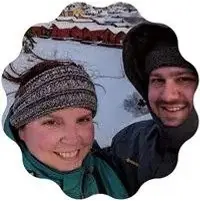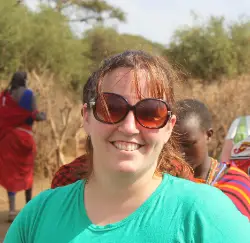Are you considering a once-in-a-lifetime experience to go gorilla trekking in Uganda? I cannot recommend this experience enough! Being 20 feet away from a silverback is an experience I’m not going to forget any time soon. Finding the best time to embark on this adventure can make all the difference in your experience.
Uganda is home to nearly half of the world’s mountain gorilla population, making it a prime destination for gorilla trekking. However, the country experiences different seasons that can impact your trekking experience. Knowing the best time to visit can ensure that you have the best chance of spotting these majestic creatures in their natural habitat.
Choosing the best time to go gorilla trekking in Uganda involves considering factors such as weather, gorilla behavior, and the availability of permits. By planning your trip during the optimal time, you can increase your chances of having a memorable and successful gorilla trekking experience.
I worked with Africa Adventure Vacations to make a custom itinerary. I have special safari pricing for my readers, so contact me for more information! This post is not sponsored by them.
This post contains affiliate links. This means if you purchase something from a link, I may make a small commission, at no cost to you. This helps me keep the site running and free.
If you like this post, be sure to sign up for my e-mail list for travel inspiration (and get your FREE budget printable), or connect with me on Facebook, Instagram, Twitter, or Pinterest.
Where to Go Gorilla Trekking in Uganda?
In Uganda, gorilla safaris can be experienced in two main national parks: Bwindi Impenetrable Forest National Park and Mgahinga National Park. Bwindi National Park is home to 17 habituated gorilla families, while Mgahinga National Park has 1.
Gorilla trekking in Bwindi National Park is available in four different areas: Buhoma, Ruhija, Rushaga, and Nkuringo. Each area is home to several gorilla groups, including the Mubare, Rushegura, Habinyanja, and Nkuringo groups, among others. This is the park that we went gorilla trekking in and it was amazing. It’s also the most famous and thus more tourists visit here.
Gorilla trekking in Mgahinga National Park is centered around the Nyakagezi group, which is the only habituated gorilla family in the park.
Both parks offer unique opportunities to observe and interact with these majestic primates in their natural habitat.

Why Timing Is Everything
Gorilla trekking can be enjoyed year-round in some of the destinations, such as Uganda and Rwanda. The timing of the dry season significantly impacts the experience of gorilla trekking. During the dry season, the trails are easier to navigate as the ground is drier and less slippery compared to the wet season. This makes for a more pleasant trekking experience, allowing visitors to focus on the stunning gorillas and the environment rather than struggling with muddy and slippery trails. Additionally, the dry season provides better photography opportunities as the clear skies and sunlight create ideal conditions for capturing the magnificent creatures and the lush surroundings.
The dry season in Uganda is December- February and June – July.
Trekking during the wet season has its disadvantages, including challenging weather conditions that can make the trails muddy, slippery, and more difficult to navigate. However, one advantage of trekking during the wet season is the availability of low-season discounts, allowing budget-conscious travelers to experience this incredible adventure at a lower cost. You also run the risk of not being able to go trekking because of the weather. There could be landslides and other dangers with the rain.
We visited during January and still had to trek in mud so I can only imagine what the ground would be like during the rainy season.
Ultimately, the timing of the dry season is crucial for a more enjoyable and memorable gorilla trekking experience.
Two rainy seasons
In Uganda, the country experiences two main rainy seasons: the first rainy season, also known as the long rains, occurs from March to May, while the second rainy season, the short rains, takes place from October to November.
These rainy seasons can impact travel and tourism activities in Uganda, especially for outdoor activities such as gorilla trekking and game viewing. The best time for gorilla trekking is during the dry seasons, which are from June to August and December to February. Game viewing is also optimal during these periods as wildlife tends to gather around water sources.
During the low (rainy) seasons, many lodges and the Uganda Wildlife Authority offer discounted rates to attract visitors. This makes it an ideal time for budget-conscious travelers to visit Uganda and take advantage of the reduced prices.
Overall, while the rainy seasons may impact travel activities, they also offer the opportunity to experience Uganda at a lower cost and with fewer crowds, making it a desirable time for some visitors.

Month by Month Guide for Gorilla Trekking in Uganda
Uganda offers the incredible opportunity to trek through lush forests and encounter majestic mountain gorillas in their natural habitat. Gorilla trekking in Uganda is a must-do experience for wildlife enthusiasts and nature lovers. Each month brings unique advantages and considerations for planning a successful and memorable gorilla trekking expedition. From weather patterns to gorilla behaviors, here is a month-by-month guide to help you make the most of your gorilla trekking adventure in Uganda.
January to February
The best time for gorilla trekking in Uganda is during the drier months of January and February. The weather is generally more favorable for trekking, with less rainfall and easier access to the mountain gorillas. For bird watching, the same months are ideal, as the birdlife is more active and visible during this time. The cost implications are also lower during these months, as they are considered part of the low season, leading to potentially cheaper gorilla permits and accommodation.
In February, there is a drop in traveler numbers, making it an ideal time for spotting wildlife during game drives. The dry weather pushes wildlife towards water sources, making it easier to spot animals in their natural habitat.
March to May
The wet season in Uganda, from March to May, brings heavy rains which make trekking a challenging task. Trails become muddy and slippery, making it difficult to navigate through the forests. Additionally, the heavy rains make it harder to find gorillas, as they tend to seek shelter during this time.
On the positive side, the wet season brings a decrease in safari costs and an opportunity to observe migratory birds in their natural habitat. The rainfall also results in lush green landscapes and beautiful waterfalls. Despite the challenges, many tourists still visit Uganda during the wet season to take advantage of the reduced costs and the chance to experience the country in a different light.

June to September
Another great time for gorilla trekking in Uganda is from June to September. This period falls during the peak season, at the end of the dry season, and at the start of the wet season.
During this time, the demand for gorilla permits is very high, and it is essential to book them in advance. The cost of gorilla permits during this period can be more expensive due to high demand, so it is advisable to secure them as early as possible.
Visiting Uganda for gorilla trekking during this time has its advantages, including the lush vegetation due to the start of the wet season, providing a beautiful backdrop for trekking. However, the disadvantage is that the start of the wet season can bring about unpredictable weather conditions, making trekking more challenging.
October to December
Embarking on a gorilla trekking adventure in Uganda from October to December unveils a unique experience filled with both advantages and considerations. The pricing for gorilla trekking permits ranges between $600 to $700 per person during this period. As the tail end of the wet season, the weather is pleasant, with occasional rainfall contributing to lush vegetation – an ideal setting for trekking enthusiasts. Bird watchers will find this time particularly enticing, as migratory species grace the skies, enhancing the overall wildlife experience.
The advantages of choosing this window include the agreeable weather and the picturesque landscape, providing excellent opportunities for both photography and trekking. Bird enthusiasts can rejoice in the abundance of species during these months. However, it’s crucial to be mindful of potential downsides. The recent rainfall might make trekking trails slippery, requiring careful navigation. Additionally, the favorable weather conditions might attract more tourists, affecting the tranquility of the experience.
To make the most of your journey, consider booking gorilla trekking permits well in advance. Opting for early morning treks enhances the chances of encountering wildlife. Our trek left before 8 am (with the briefing around 7 am).

Final Thoughts
Honestly, the best time to go gorilla trekking is whenever you can. It was such a humbling and amazing experience that I think just going. If you have the ability and budget to choose though, I recommend going in January. Personally, our weather was amazing, it’s peak dry seasons, and from the USA, flights are normally cheaper!
Save “Best Time to Go Gorilla Trekking in Uganda” for Later
About the Author


One response to “Best Time to Go Gorilla Trekking in Uganda”

Amazing and Informative Post












Leave a Reply